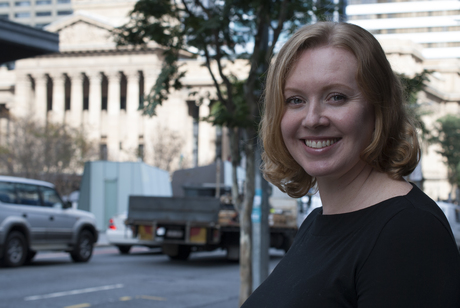Councils benefit through clean energy transformation

Ageing assets and inefficient energy practices are adding to the cost burden of councils. On the other hand, clean energy investments can transform local government operations and provide ongoing benefits for their communities. CEFC sector lead for Local Government Melanie Madders provides her opinions.
The Clean Energy Finance Corporation (CEFC) supports the local government sector to invest in a cleaner future through energy-efficient, low-emissions and renewable technologies.
These technologies have a range of ongoing benefits. Councils can achieve lower operating costs, reduced carbon footprints and more efficient asset management while developing facilities that enhance their communities. Through these sustainability projects, councils are leading their communities by example. However, there is still plenty of opportunity for further improvement.
At the recent National General Assembly of Local Government in Canberra, I spoke with elected representatives and council staff from across Australia about many great projects they’ve undertaken to reduce their energy costs. It was refreshing to meet council representatives who were already planning their next sustainability projects after realising the ongoing benefits of such initiatives, such as upgrading lighting equipment or installing solar.
But what struck me was how much broader the scope of clean energy change could be. With some strategic forward planning, councils can borrow now while interest rates are at historic lows and lock in committed finance to fund the capital cost for, say, a three-year clean energy program.
The CEFC’s view of the local government sector has two key elements: councils typically have the financial capacity to readily service borrowings, as they generally have stable cash flows and strong credit profiles; and clean energy projects deliver cost savings, which means that debt can be used to finance the upfront capital investment requirements and the debt repayments can be offset by the project savings.
At the CEFC, we have lent to councils and are happy to do more, noting that borrowing legislation varies across the states. In most cases we can provide financing solutions that will help councils to invest to achieve long-term sustainability outcomes and energy cost savings, with minimal net cost for debt service.
By offering a three-year availability period over which councils can draw down approved finance, we’re enabling councils to prepare and roll out a forward program of works to meet the council’s sustainability goals. This also delivers funding certainty for councils that are looking to harness clean energy and reduce operational costs without using their normal funding sources for the upfront capital investment.
Making councils’ operations more efficient, through energy efficiency and renewable energy technology investment, frees up council funding for other important projects in need of council support and which may not generate cost savings.
So how does a council push clean energy projects forward? First, identify where most of your energy is used — sustainability teams have a good understanding of what areas can be addressed to yield the best results. Next, look at how this aligns with your council’s policy objectives and targets for carbon reduction and map out a forward plan for the transition.
We want to help councils target projects that make a significant reduction to their energy consumption and carbon footprint. We’ve previously helped councils finance better lighting and building management systems, more energy-efficient air conditioning and heating, and LED street lighting. We’ve also financed projects that harness energy from landfill and we can finance electric vehicle fleets and community charging stations.
We know that councils are constantly reviewing the way they provide services to ensure the best possible outcomes at the lowest cost for ratepayers. The CEFC recommends that councils make sustainable energy use an integral part of that focus and consider using debt appropriately to invest in initiatives that will deliver ongoing benefits for your local community and the lead the way by investing in better, cleaner cities.
Learn more about the CEFC’s finance for local government at www.cleanenergyfinancecorp.com.au/energy-efficiency/local-government-finance-program.aspx.
Dirty dancing across a new energy landscape
The real-time balancing of electricity generation (supply) and demand is like a dynamic dance and...
Digitising Australia's buildings is key to tackling net zero
Businesses around the world are continuing to focus on net zero, and building construction and...
Ausgrid steps closer to net zero using 'blue gas' switchgear
Ausgrid is using Siemens' blue gas insulated (GIS) medium-voltage switchgear, which uses...











